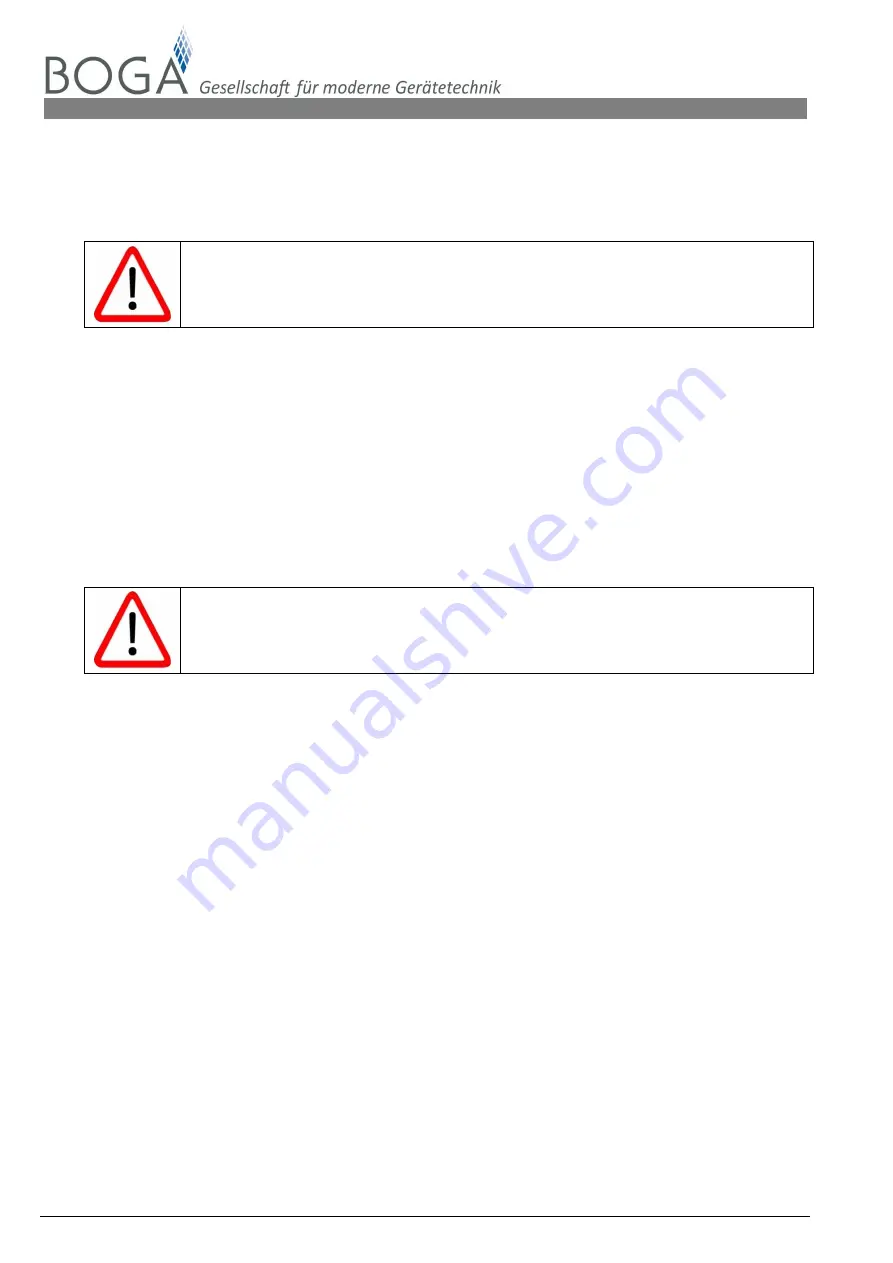
26
[MBA_NKBD_EN] Rev.: 10/2015
No liability accepted for translation or printing errors. Subject to changes in dimensions, weights and other technical data.
All rights reserved. Modifications, reprints and photomechanical reproduction, even in extract from, require the express permission of BOGA GmbH, Werkstraße 16, D-59494 Soest.
BOGA GmbH
• Werkstraße 16 • D-59494 Soest • Fon: +49 2921 96943-0 • Fax: +49 2921 96943-29 • [email protected] • www.airwin.net
13. Dimensioning of cable cross section
The ohmic resistance between transformer and humidifier through the power cable produces a loss in
voltage and consequently a drop in humidifier output.
The physical distance and the length of cable between the transformer and the humidifier
should therefore be kept to a minimum!
The voltage drop caused by ohmic resistance may be reduced by using a cable of large cross section and
compensated for by the 53 V secondary connection at the transformer. The graphs fig. 29 - 35 show the
ohmic loss for each humidifier depending on the cable length.
Using the 53 V transformer secondary voltage results in an overvoltage of 5 V (~ 10 % of 48 V) which may
be consumed by the ohmic resistance of the cable. The correct cross-section of the cable will always be that
which comes closest to the 5V mark for the voltage loss.
On account of the negligible power consumption of the humidifiers, the open-circuit voltage on the other
hand is almost equal to the voltage at the transformer. To prevent damage to the humidifier electronics, the
open-circuit may
not exceed 54 V
.
Installation costs will be kept to a minimum if the graphs are correctly used.
The dimensions of the transformer is determined not only by the electrical power
consumption of the humidifier NKBD but also on the power consumption of the cable feed
(ohmic resistance)!
The conductor resistance of fine-stranded:
1.5 mm² = 13.30
Ω/km
2.5 mm² =
7.98
Ω/km
4.0 mm² =
4.95
Ω/km
6.0 mm² =
3.30
Ω/km
10 mm² =
1.91
Ω/km
16 mm² =
1.21
Ω/km
25 mm² =
0.78
Ω/km
(extract from VDE 0295 and IEC 60228 for bare wires, class 5)
Conductor resistances refer to single-stranded conductors. They must therefore be multiplied by 2 for
two-stranded conductors (N+L1).
In addition, the load capability of insulated leads (current density) should be taken into account. VDE 0100
Part 430 and Part 523).
















































